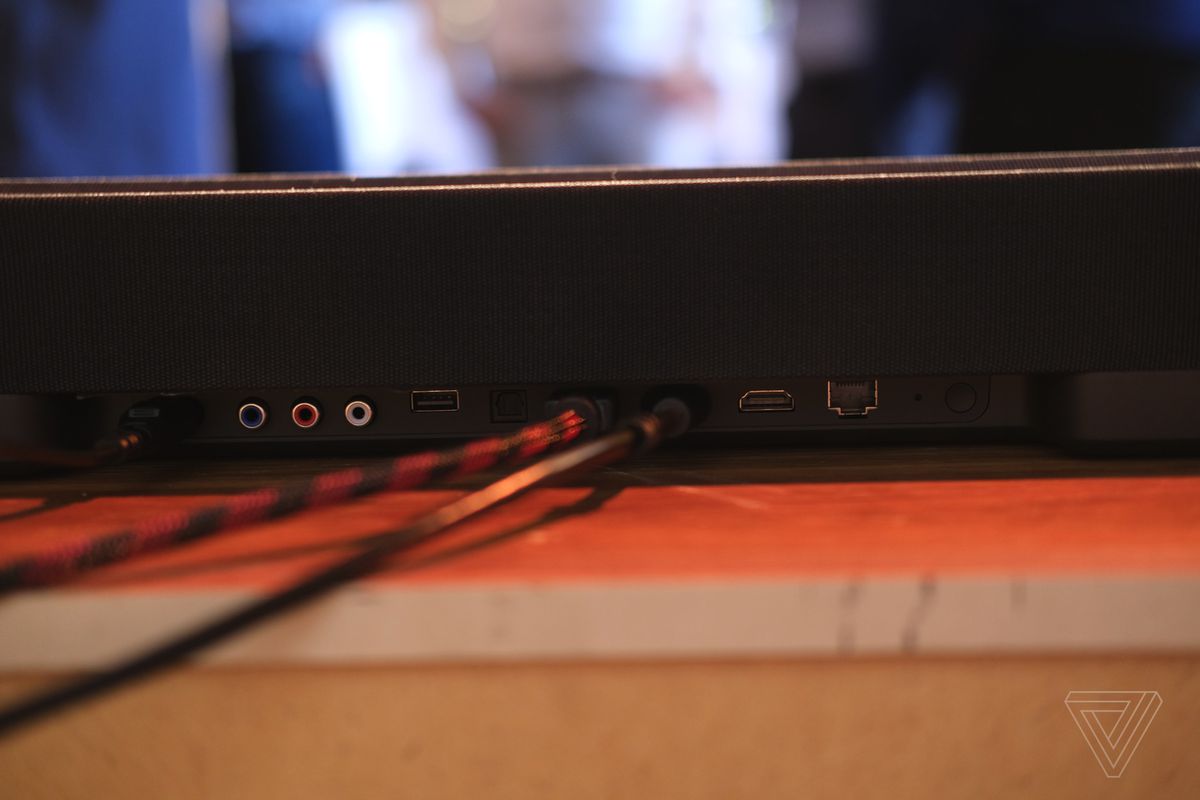Sennheiser’s more-affordable soundbar is still a premium-sounding beast
Sennheiser’s debut soundbar, released in 2019, was a niche product for a couple of reasons. The first was the price. At $2,499.95, it rivaled the cost of many traditional surround sound systems comprised of AV receivers and multiple speakers. But perhaps more important was its size. I say this with love, but the original Ambeo Soundbar (which has now been renamed the Ambeo Soundbar Max) was a chunky boy, which hardly made it an easy sell for anyone looking to tuck it discreetly in front of their TV.
So although it’s $1,000 cheaper, I think price might only be the second most important change with Sennheiser’s second soundbar, the $1,499.95 Ambeo Soundbar Plus, which the company launched today at an event in Berlin. Instead, I think its reduced size might be more important. It’s now just 7 centimeters tall rather than 13 centimeters. That means you’re still going to have trouble fitting it underneath a TV like LG’s C series, which has a notoriously short stand, but it has a decent chance at fitting under taller models, unlike its predecessor.
Of course, none of that matters if Sennheiser has had to compromise on sound to trim dollars off the soundbar’s price and centimeters off its height. But from what I heard of the soundbar today during a pair of listening sessions, that doesn’t appear to be the case at all.
First, some specs. The Sennheiser Ambeo Soundbar Plus has a total of nine drivers: two 4-inch woofers, plus seven full-range aluminum drivers. Two of these drivers are upward-firing to allow sound to bounce off the ceiling and work with 3D surround sound formats like Dolby Atmos and DTS:X, two fire sideways from the ends of the soundbar, and three fire forwards. In total, Sennheiser claims the soundbar is capable of creating the impression of a 7.1.4 surround sound system.
Note that I say it’s only creating the “impression” of this 3D sound, because, like its predecessor, the Ambeo Plus is virtualizing these channels. It doesn’t even support pairing additional speakers to act as dedicated surrounds, because Sennheiser argues its virtualization technology is good enough that it doesn’t need it.
After having the chance to listen to the Soundbar Plus in a demonstration, I’m inclined to agree. Sennheiser’s reps rolled through a series of demo videos, including some mixed in Dolby Atmos. The extent to which it felt like sound was coming from all around me was impressive. At a couple of points, the reps turned off the Ambeo virtualization, and the contrast of hearing all the sound coming directly from the soundbar made the surround sound effect that much more impressive.


You have to train this virtualization by having the soundbar use its four built-in microphones to measure your room. It’s a process that you have to repeat if you ever move the soundbar between rooms, but considering the impressive results, it seems well worthwhile. The Ambeo Soundbar Plus is also capable of detecting what kind of content is being played through it, whether it’s sports, movies, or music, for example, and optimizing its sound accordingly. There are plenty of manual controls if you prefer.
Bass performance of the soundbar was a little harder to judge. Sennheiser’s demonstration initially had the soundbar paired with three of its new $699.95 Sennheiser Ambeo Sub subwoofers (it supports a maximum of four). And as you might expect from being surrounded by three 8-inch woofers, the effect was impressive, with music tracks in particular offering a real gut punch of sound with each bass note.
Take away the optional subwoofers, and it’s hard not to feel a little disappointed by what the Ambeo Plus can achieve on its own. That’s not to say it’s bad at bass — it was lovely and present, and it didn’t overstay its welcome by becoming booming or overwhelming. It just can’t move air in the same way as a dedicated sub.

The Ambeo Soundbar Plus is well-stocked with connectivity options. There are a total of three HDMI ports, one eARC for connecting to a TV and two regular HDMI inputs, alongside optical and traditional RCA. There’s also a physical port for connecting a wired sub, if you so choose. Wirelessly, you have a choice of a number of standards including Bluetooth, AirPlay 2, Spotify Connect, Tidal Connect, and Chromecast built in. It also has Alexa Built-in and is HomeKit compatible.
With the original Ambeo Soundbar Max, and now the Ambeo Soundbar Plus, it’s clear that Sennheiser wants to broaden the audience for its soundbars from the audiophile high end to a much more mass-market consumer. At $1,499.95, the Ambeo Soundbar Plus still won’t be for everyone, but it could be another convincing bar-shaped alternative to a traditional surround sound speaker setup. At the very least, it might actually fit under your TV this time.
Read the full article Here


